Lighting is an essential component of home security, and adding a motion sensor light to your indoor space is a smart way to enhance it. Traditional lights may illuminate your house, but they need to be manually turned on or off, and you can forget to switch them on before leaving your home.
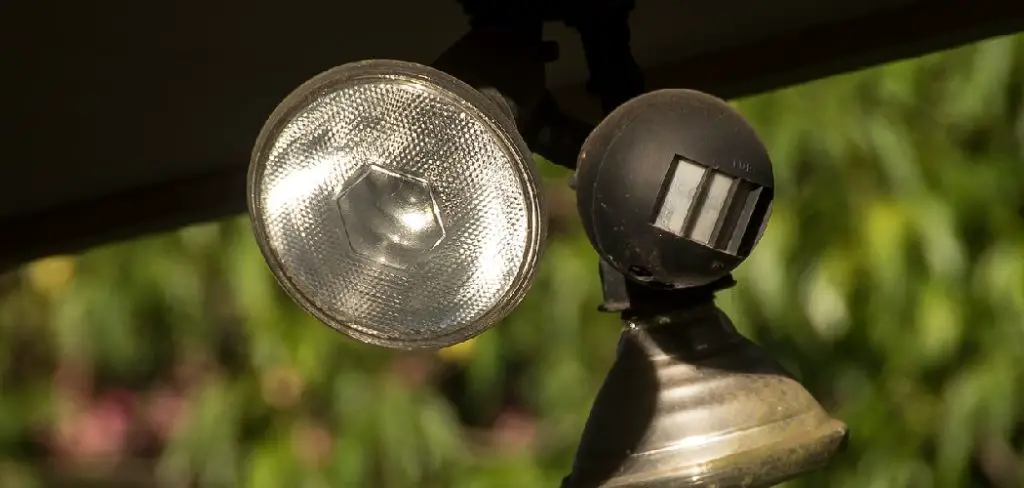
Motion sensor lights detect motion in their vicinity and automatically turn on, ensuring that you or your family members never come back to a dark home. Furthermore, indoor motion sensor lights enhance your home’s safety by deterring burglars who avoid well-lit environments. In this post, we’ll guide you on how to install motion sensor light indoor.
Can You Install a Motion Sensor Light Indoor?
Have you ever considered installing a motion sensor light indoors? While we usually think of these lights as outdoor security measures, they can be just as effective and convenient for indoor use. Imagine coming home with your arms full of groceries and not having to fumble for the light switch—simply walking into the room would trigger the motion sensor and illuminate the space.
Or maybe you have a pet that likes to roam around at night, but you don’t want to leave a light on all night long. A motion sensor light can provide just enough light for them to navigate without disturbing your sleep. So if you’re tired of fumbling in the dark or forgetting to turn off lights when leaving a room, consider investing in an indoor motion sensor light.
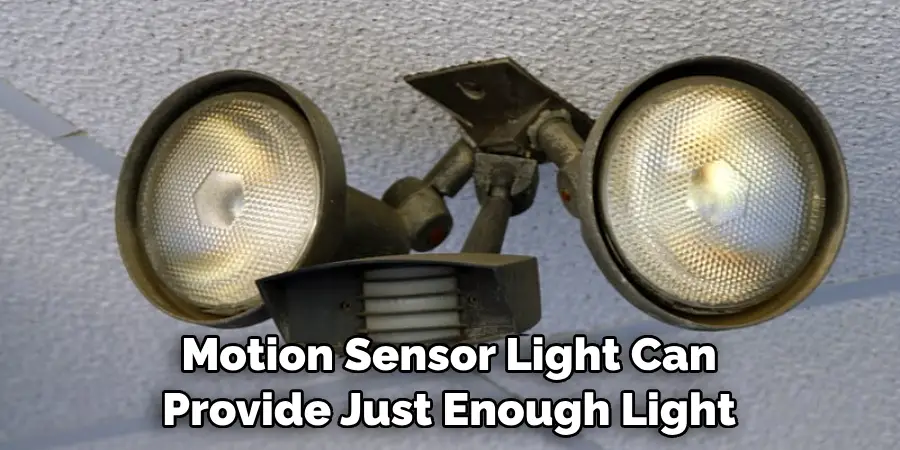
Why Should You Install Motion Sensor Light Indoor?
Have you ever stumbled in the dark searching for the light switch? Or maybe you were carrying something heavy and couldn’t turn on the light without putting everything down? With indoor motion sensor lights, those moments are a thing of the past. Motion sensors detect movement and automatically turn the lights on, providing immediate illumination without the need for fumbling around in the dark.
Not only do motion sensor lights offer convenience, but they also provide added security by turning on when someone enters the room, deterring potential intruders. Plus, they’re energy-efficient since they only turn on when needed and automatically turn off when no movement is detected, saving you both time and money in the long run. Add a modern touch to your home and enhance your safety with indoor motion sensor lights.
7 Steps to Follow on How to Install Motion Sensor Light Indoor
Step 1: Choose the Appropriate Location
Choosing the correct location is essential to get the most out of your motion sensor light. Before you begin to install, choose an area that receives a good amount of foot traffic or that you wish to be illuminated when you enter.
Remember to keep the light away from the reach of children and pets to avoid them from tampering with the sensors. We recommend choosing a location that is easily accessible yet away from outdoor glare or other lights that may interfere with the sensor functionality.
Step 2: Turn Off the Power Supply
Turning off the electricity supply before installing a motion sensor light is crucial as it ensures your safety when dealing with wires. First, turn off the power supply to the room where you wish to install the light. This will reduce the risk of electric shock while working on the electrical connections.
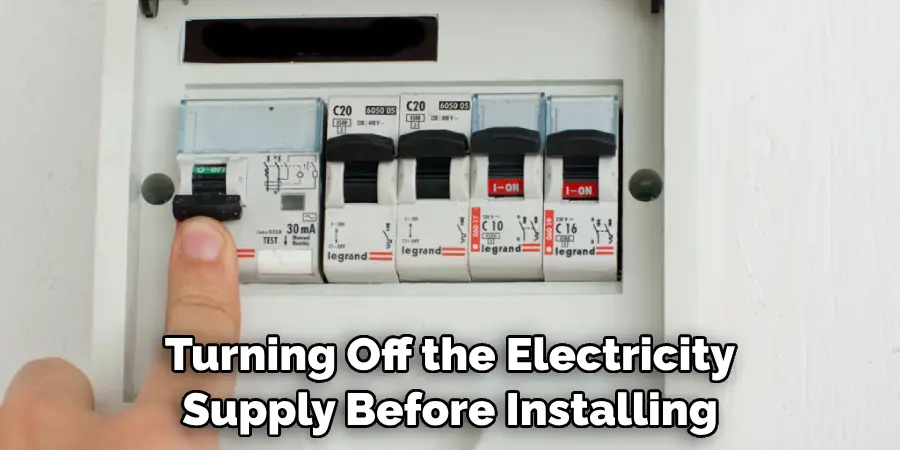
Step 3: Install the Mounting Bracket
Once you locate the right spot and turn off the power supply, you can install the mounting bracket for your sensor light. Fix the screws to the wall or ceiling by drilling holes, and ensure that the bracket is leveled appropriately. Also, make sure that the screws are tightly fixed to the wall or ceiling.
Step 4: Connect Wires
After you’ve installed the mounting bracket, you’ll need to connect the wiring to the motion sensor light. Typically, the wiring consists of three black, white, and green wires. Use a wire stripper to remove about 1.25 cm of insulation from each wire. Then, connect the fixture’s black wire to the electrical box’s black wire. Connect the white wire from the fixture to the white wire from the electrical box and twist them tightly.
Step 5: Fasten the Light Fixture and Activate Sensors
After connecting the wiring, mount the light fixture onto the mounting bracket. Once this is done, turn the power back on, and the sensors will activate. If the sensors do not work by any chance, review your wiring, and ensure you have followed all the instructions.
Step 6: Test the Light
After you have installed the motion sensor light, it is important to test it. Make sure that it turns on when motion is detected and also that it has a delay time before turning off. To adjust the sensitivity of the light or other settings, refer to your product’s manual for instructions.
Step 7: Clean and Maintain
Regular cleaning of your motion sensor light will help it last longer and work better. Use a soft, damp cloth to wipe down the fixture and keep it dust-free. If you ever need to adjust the sensitivity or other settings, refer to your product’s manual for instructions.
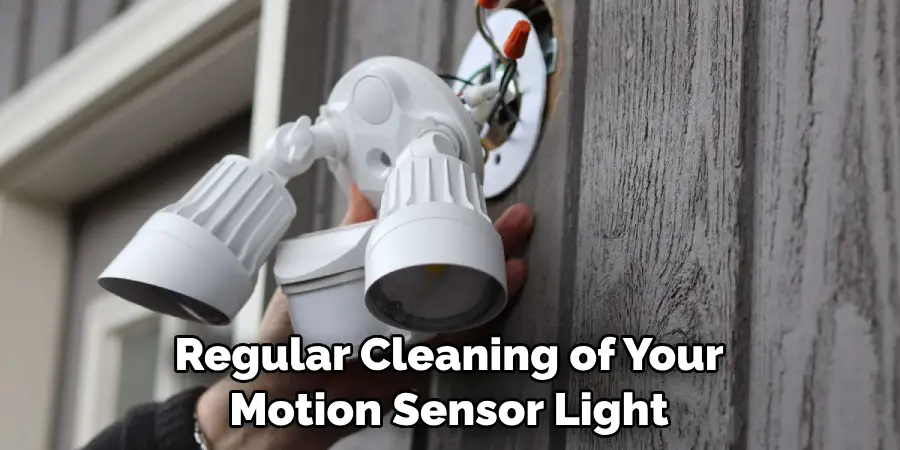
That’s it! You’ve now learned how to install motion sensor light indoor. With the right tools and knowledge, you can make sure that your lighting is working properly and safely. Good luck!
5 Considerations Things When You Need to Install Motion Sensor Light Indoor
1. The Size of the Sensor
One of the most important things to consider when choosing a motion sensor light is the size of the sensor. The sensor is what detects movement and triggers the light to turn on. If the sensor is too small, it may not be able to detect movement properly. Conversely, if the sensor is too large, the light may turn on even when there is no movement.
2. The Sensitivity of the Sensor
Another thing to consider is the sensitivity of the sensor. Some sensors are more sensitive than others and will trigger the light to turn on even when there is slight movement. If you want the light only to turn on when there is significant movement, then you will need to choose a sensor with a lower sensitivity.
3. The Range of the Sensor
The range of the sensor is also an important consideration. The range is the distance that the sensor can detect movement. If you need the light to turn on from a distance, then you will need to choose a sensor with a longer range. Conversely, if you only need the light to turn on when someone is nearby, you can choose a sensor with a shorter range.
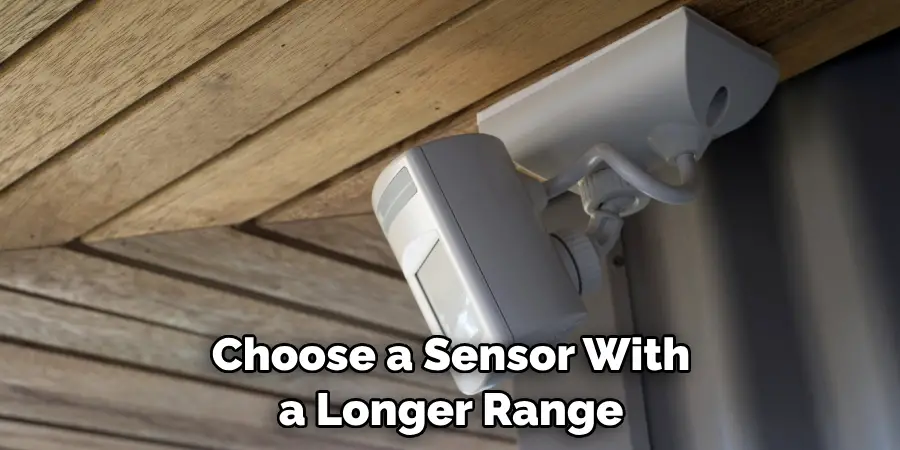
4. The Duration of the Light
Another thing to consider is how long you want the light to stay on after it has been triggered. Some lights will stay on for a few seconds, while others will stay on for minutes or even hours. Choose a duration that best suits your needs.
5. The Brightness of the Light
Finally, you will also need to consider how bright you want the light to be. Some lights are very bright, while others are more subdued. Choose a brightness that best suits your needs and preferences.
By considering the sensor light’s size, sensitivity, range, duration, and brightness, you can choose one that best suits your needs and install it in your home easily. Additionally, consider reading the manufacturer’s instructions before beginning installation to ensure a successful outcome.
Benefits of Install Motion Sensor Light Indoor
There are a plethora of benefits of installing motion sensor lights indoors, including peace of mind, energy efficiency, and convenience. If you often worry about your home’s safety and security, then motion sensor lights are a game-changer. They can alert you of any intruders and deter them from entering your property. Moreover, these lights are great for reducing your energy bills, as they only turn on when someone is present in the room.
This means that you’ll no longer have to worry about accidentally leaving the lights on and wasting electricity. Lastly, these lights are incredibly convenient, especially when you have your hands full and can’t turn the switch on or off. Simply walk into the room, and the sensor will do the rest. So, if you’re looking for a simple yet effective way to improve your home, make the switch to motion sensor lights today.
Some Common Mistakes People Make When Trying to Install Motion Sensor Light Indoor
Installing a motion sensor light indoors can be a great way to enhance your home’s security and convenience. However, many people make certain mistakes that can prevent these lights from working as intended. One of the most common mistakes is mounting the light too low or too high on the wall.
This can cause the sensor to either miss motion or pick up movement that is not intended. Another mistake is using the wrong type of light bulb or not providing enough power to the fixture. This can lead to dim lighting or the sensor failing to operate altogether. To avoid these mistakes, be sure to carefully follow the manufacturer’s instructions and double-check all of your work before you flip the switch.
Conclusion
Installing motion sensor lights indoors helps increase the safety and security of your home. With the steps listed above, you can install motion sensor lights and safeguard your family and home effortlessly.
You can now enjoy the convenience of walking into a well-lit home, deterring burglars, and preventing accidents while saving energy and money. So what are you waiting for? Get to work and boost your home security with motion sensor lights today! Thanks for reading our post about how to install motion sensor light indoor.
